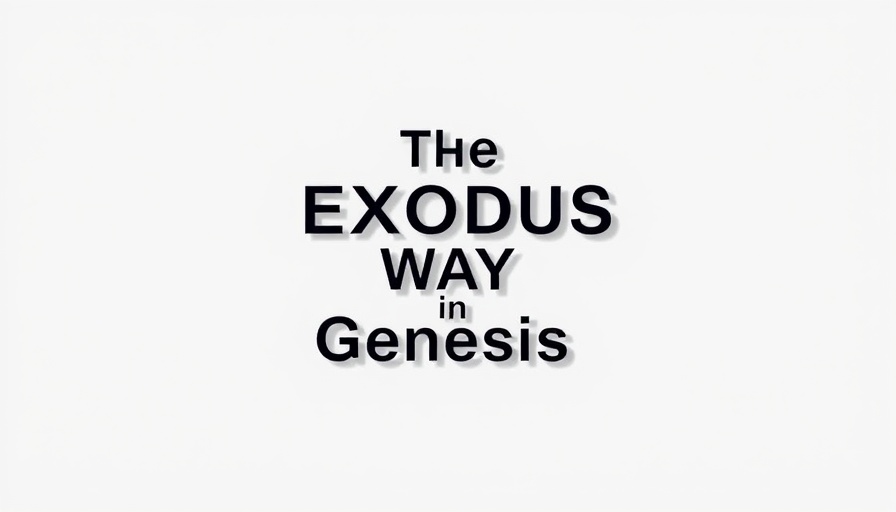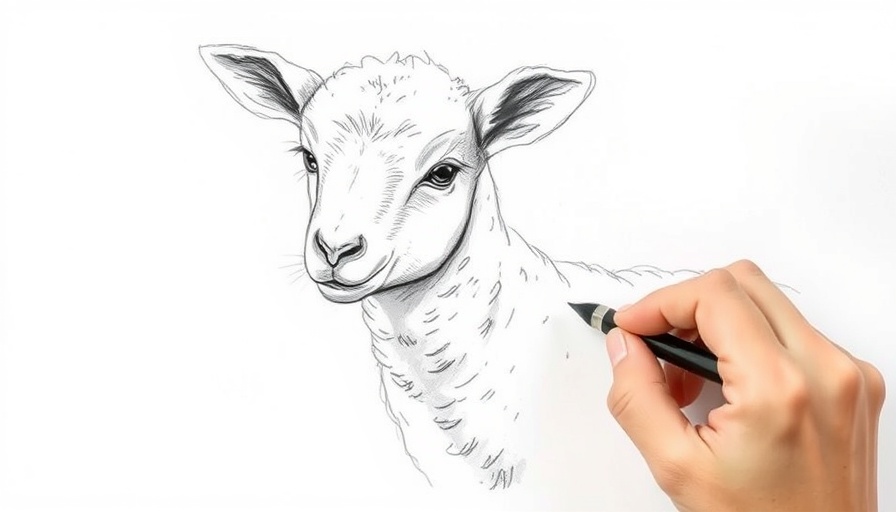
A Journey of Faith and Freedom: Genesis Illuminates the Exodus Way
In the vast narrative of the Bible, the stories within Genesis and Exodus serve as powerful illustrations of God’s faithfulness amidst adversity. The account begins in Genesis 12, where God promises Abram that he would be the father of a great nation and would inherit a land flowing with milk and honey. However, due to an unexpected famine, Abram and his wife Sarai find themselves in Egypt—a place of refuge that ironically becomes a source of distress when Pharaoh seizes Sarai for himself. Yet, God, in His steadfast commitment to His promises, intervenes by afflicting Pharaoh's household with plagues, leading to their release.
In Genesis and the Exodus Way, the discussion dives into the parallels between God's promises and our journeys, exploring key insights that sparked deeper analysis on our end.
The Way Out: A Divine Intervention
This pivotal moment showcases not just divine protection, but also highlights God’s unwavering commitment to His covenant with Abram. The way out of Egypt symbolizes liberation—a poignant reminder that even when life takes us down unexpected paths, God has a plan, guiding us safely to our destiny. This theme resonates deeply within the Seventh-day Adventist faith community, reminding members of their own journeys and the faith required along the way.
The Way Through: Embracing the Wilderness
After leaving Egypt, Abram and Sarai venture into the wilderness, a place that could be perceived as barren and unwelcoming. Yet here, they are provided for abundantly with livestock, silver, and gold. This presents an important lesson for believers: even in desolation, God provides sustenance. The wilderness serves as a metaphor for life’s challenges—struggles that, while difficult, can ultimately lead to growth and transformation. Adventists are encouraged to see their trials as part of a bigger journey rather than mere obstacles.
The Way In: Settling into God’s Promise
Ultimately, Abram and Sarai arrive in Canaan, the promised land where they commune with God. The return to this land mirrors both stories—Genesis and Exodus—showing the culmination of faith and trust in God’s plan. This intersection of paths is where believers today find solace, reflecting on how God’s promises manifest in their lives. The faith community can find inspiration in this narrative, knowing that despite setbacks, their commitment to God opens pathways to fulfillment and peace in the promised land of His love.
What Can We Learn From These Stories?
The parallels between the stories of Abram and the Israelites emphasize that God’s faithfulness is a constant thread woven through the fabric of biblical history. Just like Abram faced challenges and uncertainty, so too do believers in their lives today—from health challenges to societal pressures. This age-old narrative encourages us to trust in God's promises and seek His guidance in times of trouble.
Calling the Faith Community to Reflect
As members of the SDA community, how can these narratives influence our present actions? It is vital to reflect on our own journeys. Are we recognizing God amidst our struggles? When faced with life’s wilderness, do we look closely at the provisions He offers? The Exodus way illustrated through the Genesis journey invites each of us to deepen our understanding of faith and reliance on God as we traverse our own wilderness.
In analyzing the video Genesis and the Exodus Way, the exploration of how God’s interventions shaped the lives of Abram and the Israelites encourages us to trust in His plan during our personal exile. These biblical accounts remind us of the importance of our faith and obedience in navigating the wilderness of life.
Taking Action Within the Community
It’s essential for our church community to engage meaningfully with these narratives, discussing and sharing what we’ve learned from them. Consider hosting Bible study groups where these themes can be discussed openly, fostering a support system for everyone suffering from personal challenges.
The Importance of Faith in Daily Life
The stories of Abram and the Israelites remind us that faith is not just a doctrine, but a daily journey. Believers are invited to utilize the lessons of the past to inspire their everyday lives, encouraging each other as they navigate challenges and celebrate victories together. The reminder that God is with us through every trial creates a community of strength and encouragement among believers.
Ultimately, understanding the Exodus way through Genesis invites each believer into a deeper relationship with God, one that thrives on trust and reliance during times of uncertainty. The journey continues, and just like Abram, we too can embrace the paths that lead us to fulfillment in God’s promises.
 Add Row
Add Row  Add
Add 




Write A Comment